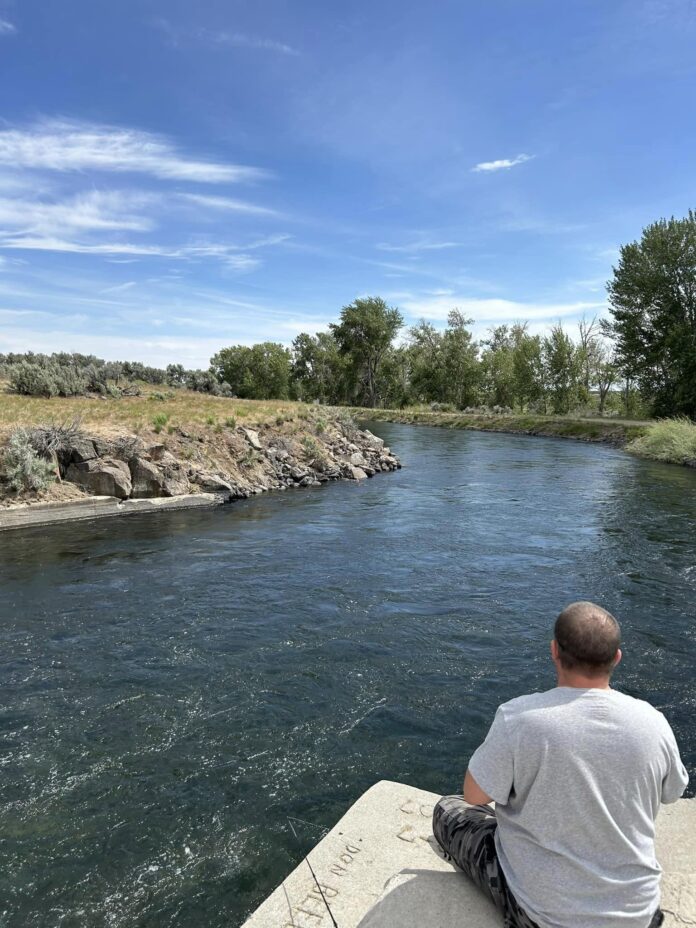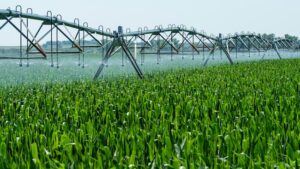
Farmers in Struggle Over Water Rights
BY ISAIAH FRIZZELL

By now everyone has heard of the water curtailment order in eastern Idaho. As with anything to do with natural resources and survival, there are intensely personal, familial and community-minded emotions, concerns and misunderstandings. Perhaps the biggest question that keeps getting asked is, ‘What exactly is going on?’
At a very basic level, it is a dispute between communities of farmers over junior and senior water rights vs the Idaho Department of Water Resources (IDWR). There is a legitimate claim that one group used more water than they should have, were ordered to replenish the water, and have yet to do so. Government has stepped in and the waters have become muddy. That’s what is at the core of this situation and it is not new. All the noise that flares up, naturally, with concerns over livelihood and the staples of survival, have clouded the issue and, unfortunately, hearsay prevails. However, a temporary agreement has been struck and eastern Idaho’s farmers will have access to water this growing season.
What Happened?
Senior water rights are established water rights that were instantiated earlier, historically. As Idaho is a ‘first in time, first in right’ state, the senior water rights prevail over junior water rights. As the curtailment means no water for many, economic losses, estimated in the hundreds of millions, could impact Idaho’s economy. Seeds already planted would not grow and land would dry up, resulting in a massive shock to the malt and alfalfa hay industries and their surrounding industries in communities across the state and country.
The biggest issue is that the onus is on the groundwater users to comply with one of the two mitigation plans, already state-approved, to recharge the aquifer and continue to manage their water use such that the resources are sustained. Due to disagreements over details of mitigation and outright denial of their operability, many of these groundwater districts have resorted to non-compliance.
This non-compliance is what led to the curtailment order. As it stands, negotiations between surface and groundwater users have progressed to the point that IDWR has paused inspections, as of Friday, June 11, to allow time for the disagreement to be settled. A long-term solution is what is being sought and what must be devised to allow for the cooperation of water rights holders and their economic outcome.
Just the facts, Ma’am
A curtailment order was issued on May 30, 2024, by IDWR. The order was to address a projected shortfall of approximately 74,100 acre-feet of water that was supposed to fulfill senior water rights. This curtailment order would affect the junior groundwater rights holders of the Eastern Snake Plain Aquifer.
IDWR holds that Idaho law states that the eastern Idaho groundwater users are responsible for replenishing the water supply that is currently predicted to create a shortage of surface water to the Twin Falls Canal Company.
Allegedly, two mitigation plans have been approved and it is up to the groundwater districts to comply in order to stop the curtailments.
It has been exclaimed that the mitigation plans are unworkable due to interpretation by the IDWR. “The harm that we would do ourselves in complying with those mitigation plans would be on par with what a curtailment would do to us.” Allan Jackson of the Idaho Groundwater Appropriators (IGWA). The IGWA is a representative organization for nine eastern Idaho groundwater districts. According to IGWA, in the past, IDWR has allowed water users to replenish their water use with storage water put back into the Snake River Aquifer yet they currently deny such a maneuver for IGWA. Further, they state that “the curtailment would cut off 75 billion gallons of water to farmers in Jefferson County and dry up over 104 thousand acres of farmland, providing a minuscule 12 million gallons of water to farmers downstream.” (localnews8.com)
“What remains is an utterly absurd situation, where hundreds of thousands of acres of farmland, and their associated economic benefits, are thrown away during a wet year to cause a small amount of additional water to overflow from the aquifer into the Snake River,” said IGWA attorney TJ Budge. “Throughout this entire process, IDWR has been inconsistent and troublingly biased against groundwater users.” (localnews8.com)
Approximately 500,000 acres of agricultural land in many counties, including Bingham, Jefferson, Clark and Bonneville, would be affected; specifically, groundwater users.
“You’re talking about tax rolls that would be cut dramatically,” said Jackson. “Your schools would be underfunded. The county tax rolls would be devastated because you no longer have this tax base from agriculture that would be there.” Jackson (localnews8.com)
Government Intervention
Lieutenant Governor Scott Bedke released the following statement regarding the compromise agreement:
“The past few weeks have been difficult for everyone affected by this water crisis. The many hours of discussion and negotiation have highlighted areas of agreement as well as areas of deep disagreement among water users in the region. I appreciate that our southern Idaho surface water and groundwater users were able to put aside their differences and come together to create an equitable solution that guarantees no water is shut off, no Idaho laws are broken, and the crops already in the ground will be ready for harvesting,” said Lt. Governor Scott Bedke.
“But it’s imperative that those same parties understand their work is not finished,” Bedke continued. “We absolutely cannot go into another growing season without arriving at a mutually agreeable mitigation plan. There are still a number of significant details to work out before we can arrive at a solid, workable plan. We have the remainder of this year to come up with such a plan, so we won’t find ourselves in this same situation next June.” (kmvt.com)
Future Flush
The temporary agreement brings a sigh of relief from farmers and community members alike. While Governor Brad Little was petitioned to intervene, he ultimately did not. It was Lt. Governor Bedke who has shepherded this agreement. But the story is not over. The Eastern Snake River Plain aquifer surface and groundwater users are tasked with creating a new, long-term agreement that adheres to Idaho’s Constitution of ‘first in time, first in right.’ The permanent plan will have to be reached by fall in order to avoid another potential curtailment.


